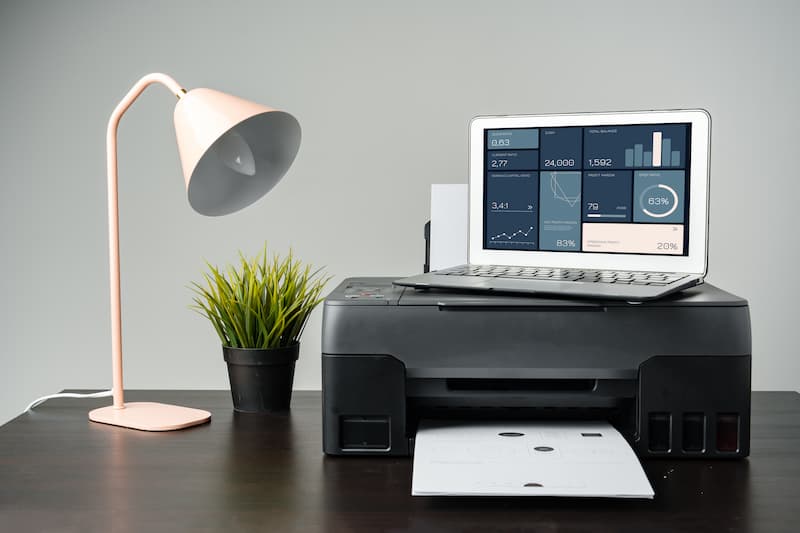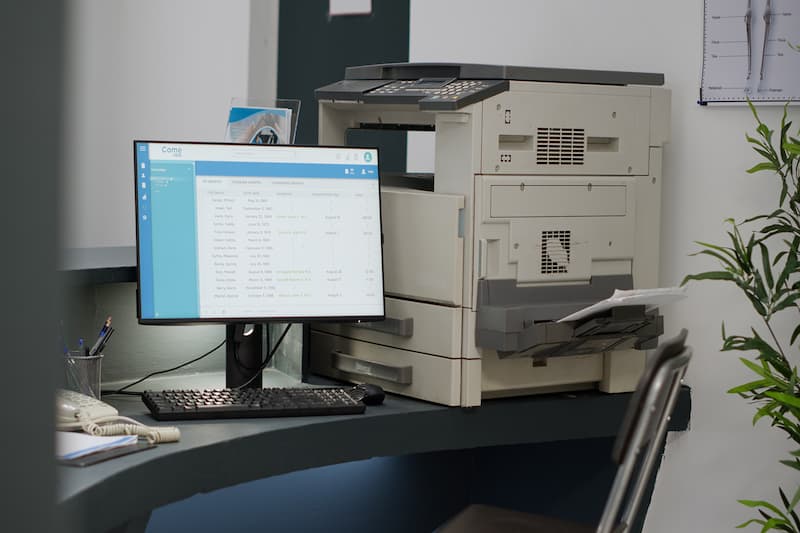How to Connect Canon Printer to Mac, MacBook and Canon Pixma: Complete Step-by-Step Article Detail Guide
How to Connect Canon Printer to Mac
Connecting a Canon printer to a Mac can seem like a complex task, especially if you are unfamiliar with macOS settings. Whether you’re using a Canon PIXMA or other Canon models, having the right setup ensures smooth and reliable printing. This guide will walk you through everything from connecting your Canon printer via USB and Wi-Fi to resolving common connectivity issues, so you can get the most out of your Canon printer on a Macbook or Mac computer.

Step-by-Step Guide to Connecting a Canon Printer to Mac
The process for connecting a Canon printer to a Macbook can vary depending on the printer model and method you choose. The most common methods are USB and Wi-Fi. Regardless of the approach, downloading the correct printer drivers is crucial for ensuring compatibility and optimal performance. In this section, we’ll cover each method in detail, so you can easily add a Canon printer to your Mac without any hassle.
How to Connect a Canon Printer to Mac Using a USB Cable
The quickest and most straightforward way to connect your Canon printer to a Mac is by using a USB cable. First, ensure that both the printer and the Mac are turned on. Connect the USB cable securely from your Canon printer to the Macbook or Mac computer. Once connected, go to System Preferences, and select Printers & Scanners. Click on Add Printer to see a list of available devices. Your Canon printer should appear in the printer list.
If your Canon printer does not appear, you may need to download the appropriate Canon printer driver from the Canon website. Search for your printer model, download the compatible driver, and follow the on-screen instructions to install it. After installation, return to Printers & Scanners, and select Add Printer again. Once your Canon printer appears in the list of available printers, click Add to complete the process. Test the connection by printing a document to verify that the setup is successful.
Steps to Install Canon Printer via USB
After connecting the Canon printer to your Macbook using a USB cable, the next step is installing the correct Canon printer driver. Download the driver from the Canon support page, ensuring that it matches your macOS version. Once downloaded, open the driver file and follow the installation instructions. When the installation is complete, go to System Preferences > Printers & Scanners, click on Add a Printer, and select your Canon printer from the list. Make sure to configure your printer settings based on your preferences, such as default paper size and print quality.
How to Connect a Canon Printer to Mac Using Wi-Fi
Connecting your Canon printer wirelessly to a Mac offers greater flexibility, allowing you to print from anywhere within your network. Begin by turning on the Canon printer and ensuring it’s connected to the same Wi-Fi network as your Mac. If your printer has a display panel, navigate to Wi-Fi Setup and select your Wi-Fi network. Enter your Wi-Fi password, and wait for the connection to be established.
Once the Canon printer is connected to your Wi-Fi network, go to your Mac’s System Preferences and click on Printers & Scanners. Click on Add Printer, and your Canon printer should appear in the list of available printers. Select the printer and click Add. If your Canon printer does not appear in the list, enter the printer’s IP address manually. To find the IP address, check the printer’s network settings. After adding the printer, make sure to set it as your default printer for easy access.
Setting Up AirPrint to Print Wirelessly from Mac
AirPrint is a built-in feature in macOS that allows you to print wirelessly without installing additional drivers. To use AirPrint with your Canon printer, ensure that both your Mac and Canon printer are connected to the same Wi-Fi network. Open System Preferences, click on Printers & Scanners, and select Add Printer. If your Canon printer supports AirPrint, it will appear in the list of available printers as an AirPrint-enabled device. Select AirPrint from the Use dropdown menu and click Add.

If your Canon printer is not AirPrint-enabled, you may need to install the specific Canon printer driver for wireless printing. In this case, go to the Canon website, download the driver, and follow the setup instructions.
Manually Adding Canon Printer to Wi-Fi
Sometimes, connecting a Canon printer to a Wi-Fi network manually can be more effective. To do this, find the IP address of your Canon printer from the network settings menu on the printer’s display panel. Go to System Preferences > Printers & Scanners on your Mac, click Add Printer, and select IP. Enter the printer’s IP address, and select the correct Canon printer driver from the list. Once added, test the connection by printing a sample document.
Downloading and Installing Canon Printer Drivers for macOS
Keeping your Canon printer drivers up-to-date is essential for maintaining compatibility and performance. Visit the Canon support website and navigate to the Drivers & Downloads section. Enter your Canon printer model and select the appropriate driver for your macOS version. Download the driver, open the installation file, and follow the prompts to complete the setup. Restart your Mac to apply the changes.
Selecting the Right Canon Printer Driver for Your Mac
Choosing the right Canon printer driver is crucial for ensuring optimal performance. Search for your Canon PIXMA or other Canon model on the Canon support page, and download the recommended driver. Make sure to select the driver that matches your macOS version, as using the wrong driver can lead to connectivity issues. Install the driver, and test the printer to verify that it’s functioning correctly.
Installing the Latest Canon Printer Driver
Always ensure you have the latest Canon printer driver to avoid potential issues. Download the driver from the Canon support page, and follow the installation instructions. If your Canon printer is already installed, go to System Preferences > Printers & Scanners, select your Canon printer, and click Options & Supplies. Click Driver to check if an update is available. Install any updates to keep your printer running smoothly.
Configuring Canon Printer Settings on macOS
Once your Canon printer is connected, you can customize its settings to match your specific requirements. Go to System Preferences > Printers & Scanners, select your Canon printer, and click Options & Supplies. Here, you can set the default print quality, paper size, and duplex printing options. For Canon PIXMA printers, you can also adjust the color profiles to enhance print quality.
Using Canon Utility Software for Scanning and More
For Canon printers that support scanning, installing Canon IJ Scan Utility offers additional functionality. This software allows you to scan documents directly to your Mac, adjust scan settings, and manage scanned files. Open the Canon IJ Scan Utility, select your Canon printer, and configure the settings based on your preferences. Save scans to specific folders, cloud storage, or email.
Fine-Tuning Print and Scan Settings for Best Results
Using the Canon IJ Scan Utility, you can create custom profiles for different types of documents, such as text, photos, or mixed content. Adjust the resolution, file format, and color options to ensure the best output for each scan. Similarly, fine-tune print settings through System Preferences to optimize print quality and speed.
Troubleshooting Canon Printer Connection Issues on Mac

Even with the correct setup, you might encounter problems like your Canon printer not appearing in the list, driver conflicts, or Wi-Fi disconnections. Here’s how to resolve these common issues.
Fixing “Printer Not Appearing in the Printer List” Issue
If your Canon printer doesn’t appear in Printers & Scanners, first ensure that both the printer and Mac are on the same Wi-Fi network. Go to System Preferences, select Printers & Scanners, and click Reset Printing System. Re-add your Canon printer and test the connection. Alternatively, manually enter the IP address of the printer if it’s still not recognized.
Resolving Canon Printer Driver Conflicts
Driver conflicts can occur when using outdated or incompatible drivers. Go to the Canon support website, download the latest Canon printer driver, and reinstall it. If the issue persists, remove the current driver from System Preferences and re-add your Canon printer.
Using Canon Printer with Mac for Advanced Features
Setting Up Canon Printer for Multi-User Environments
If multiple users need to share a Canon printer on a Mac network, go to System Preferences, select Printers & Scanners, and enable printer sharing. Set up user permissions and configure print quotas to manage usage.
Using Canon Printer with iOS Devices for Seamless Printing
Printing from your iPhone or iPad is easy with AirPrint. Connect your iOS device and Canon printer to the same Wi-Fi network. Select Print from any app, choose your Canon printer, and configure the print settings before printing.
You
Connecting a Canon printer to a Mac involves a few straightforward steps. Whether using a USB cable or Wi-Fi, ensuring that you have the right Canon printer driver is essential. By following this detailed guide, you can set up and maintain your Canon printer on your Mac effectively, troubleshoot common issues, and enjoy smooth printing and scanning.










